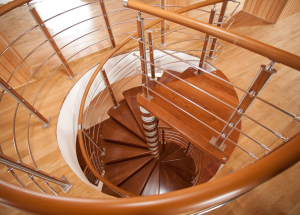Handrails are handrails for stairs, fastened to balusters (pillars of stairs). Handrails and railings for the staircase provide not only the aesthetic function of decorating the house, but also serve for the convenience and safety of all its inhabitants. Railings for stairs are made of a variety of materials - their wood and metal, as well as plastic. The article is devoted to how to choose the material for their manufacture and how to install handrails and handrails.
Content
The choice of material for handrails and handrails
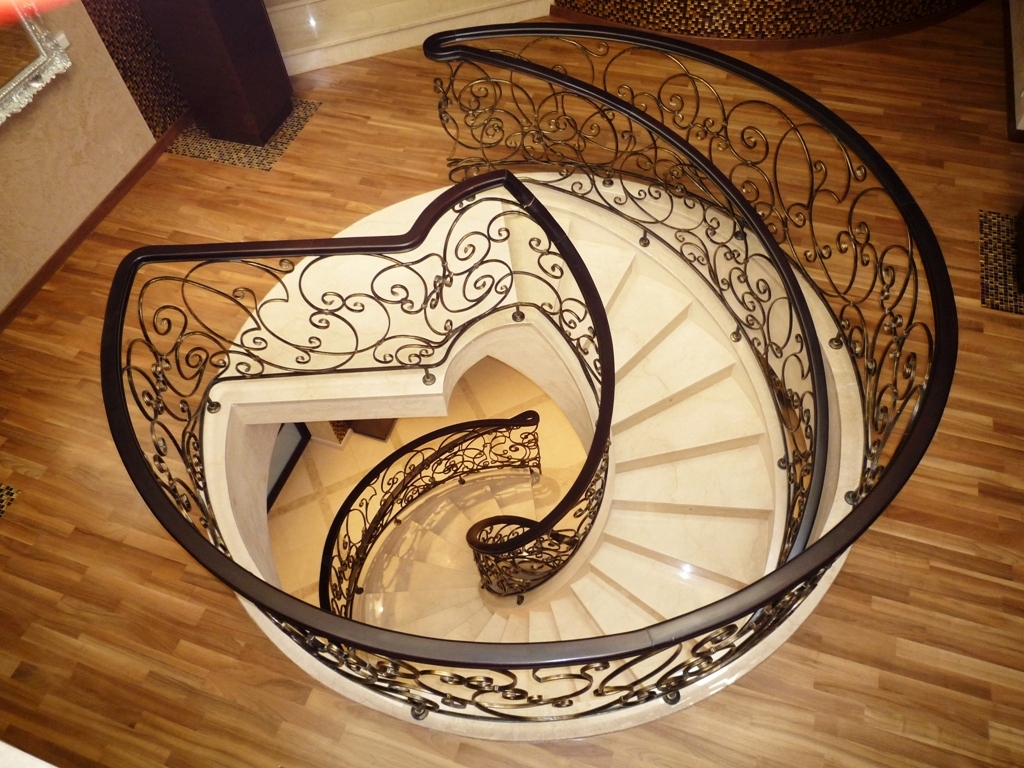
Railings for stairs can be made both independently and on order in a construction company. The most simple in the manufacture of wooden railings, but with the metal will have to tinker.
Wooden railing for stairs is made of such species of wood as larch, ash or oak. In any case, if the staircase is wooden, then the railings to it must be made of the same wood.
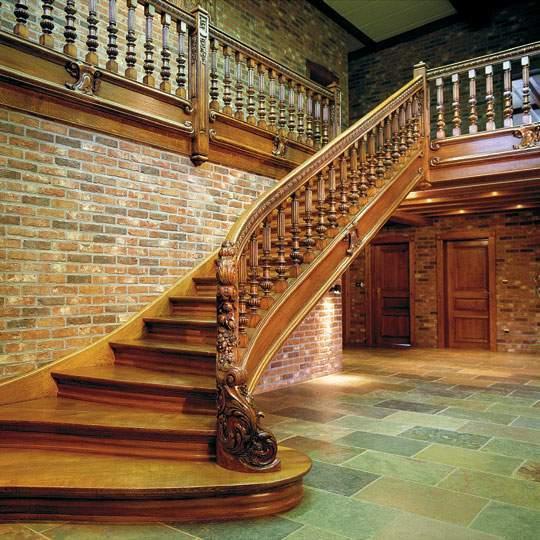
Forged stairs for stairs differ in the way they are made. The most common are: cold forging, machine forging and hand forging. Forged railing, in the absence of skill in their manufacture is best done to order.
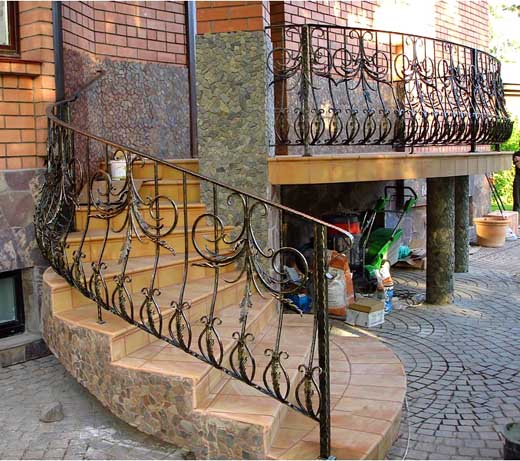
Forged stairs for stairs should be protected from external influences, as they are exposed to rust. Before the treatment with paint, the railing must be pre-treated by sandblasting. For indoor use, it is better to take a forge paint or a hammerite.
Metal and stainless railings for stairs use most often in various institutions, offices, supermarkets, shops, in the entrance groups and sports clubs. Most often, rails and handrails are used in aluminum and stainless steel. These structures, if properly processed, are not corroded, they are not afraid of low temperatures and humidity, and also retain their attractive appearance for a long time.
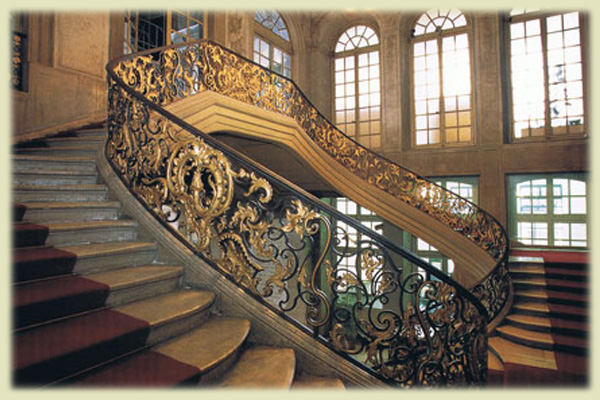
The rules for installing handrails and handrails
Whichever material you choose, there are certain rules and regulations for the installation of handrails, as well as the norms of railing height on the stairs. So, according to SNiPu, all stair constructions of more than three steps should have handrails, which should be at least 90 cm tall, the posts are set at a distance not less than 60 cm. The stair, standing freely, is fenced on both sides, and the passing along the wall, fenced only on the free side. According to the SNIP, handrails should have handy shapes and sizes for hand girth (round, square, rectangular shape, as well as figured, with cut out side panels are allowed), that is, the hand should slide freely on the handrail. It is also important that the railings and handrails fit organically into the interior.
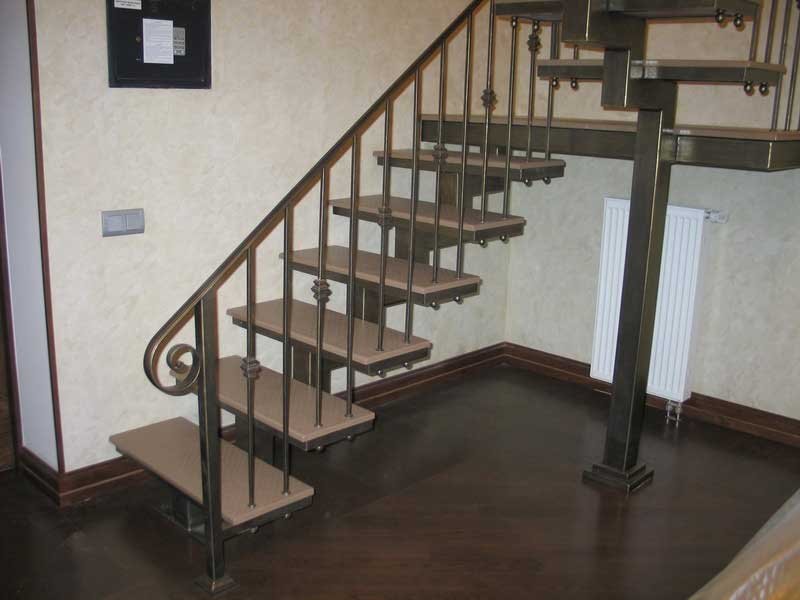
The handrail should be ordered to the manufacturer before the ladder is finally sheathed, since with the installation of support poles there may be problems.
Methods and places of fastening of handrails should be agreed with the manufacturer in advance, in particular transitions to oblique rails from straight sections.
Mounted on top of the step of the railing, take some, albeit not so large, staircase space, for this reason, if the stairway should be wide, it is better to give preference to the lateral fastening of the handrail.
How to make a railing for stairs
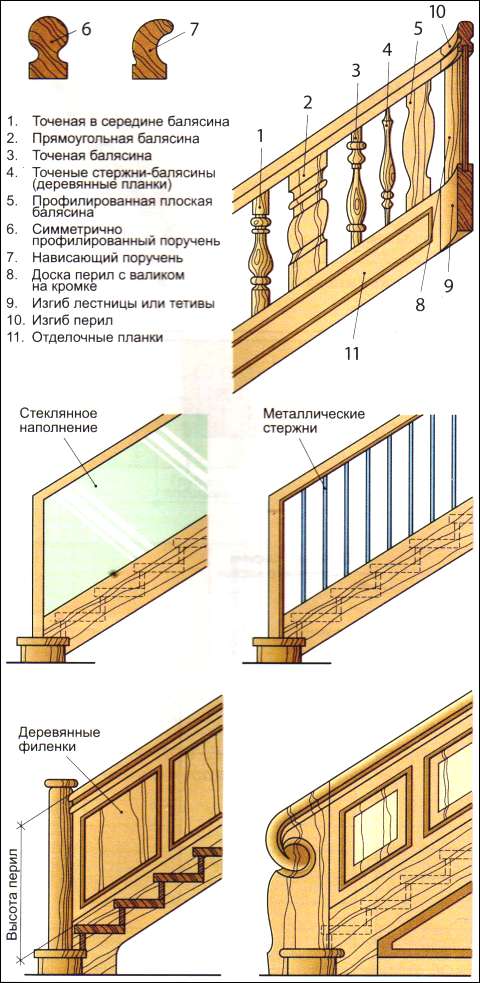
Stairs and railings for them must necessarily be reliable and safe, because it affects not only the health, but also the lives of people living in the house where they are installed.
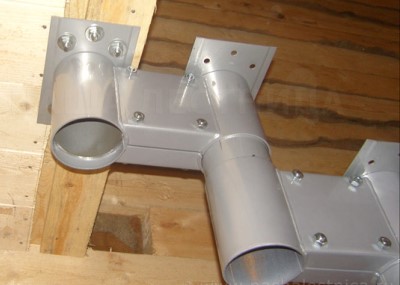
Therefore, their manufacture and installation should be approached with all responsibility and seriousness. In order to qualitatively mount wooden handrails and railings, we will need such tools:
power tools (drill with drills of different diameters, also a jigsaw and a screwdriver);
set of hacksaws for working on wood with small and large teeth;
carpenter, plumb, chair, level;
hammers of medium and low weight;
set of chisels, chisel, screwdriver set.
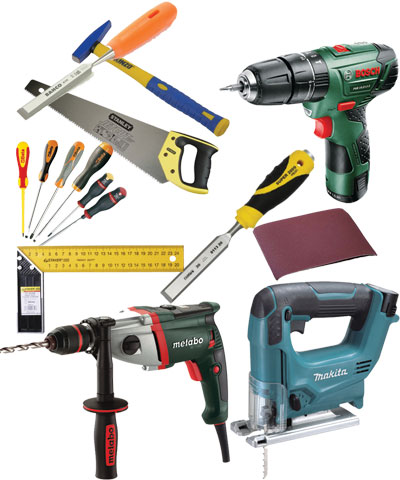
So, in the beginning it is strictly vertical to install the extreme and turntable and very firmly fix them directly to the stairs.
Then it is necessary to install the bowstring (the lower support element) with its fastening to the ladder march and to the cabinets in a secret way with the help of special screws.
Now it is necessary to stretch the lanyard on the extreme curbstones and begin laying on it a handrail, which is securely attached to the curbstones. The best fastening in this case will be a dense fit of a square spike, made in the upper part of the pedestals, into the hollowed out notch from the bottom of the handrail. All this connection must be planted on a special glue and also on long screws (for absolute reliability assurance). These screws, for the sake of aesthetics, can be covered with balls cut from the tree on top.
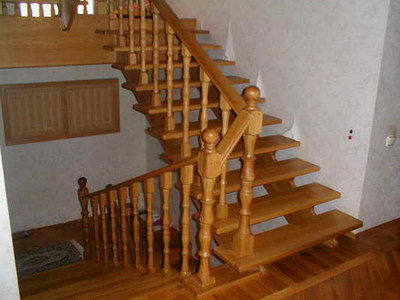
Then it is necessary to install balusters, plaster all the gaps formed in the process of work in the connections of the elements of the ladder, clean the surface of our new fence and gently coat them with paint or a special transparent (yacht or parquet varnish).
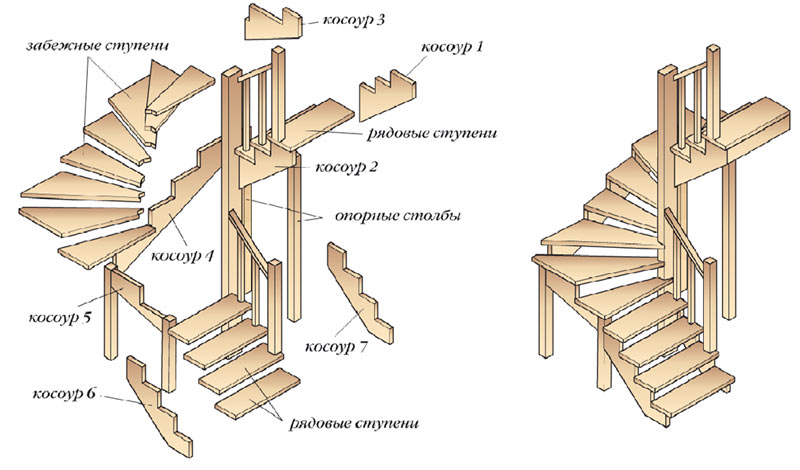
We hope that this information is useful to you. Next, we offer to watch a video from which you can learn more in detail how to install handrails and handrails for stairs.


